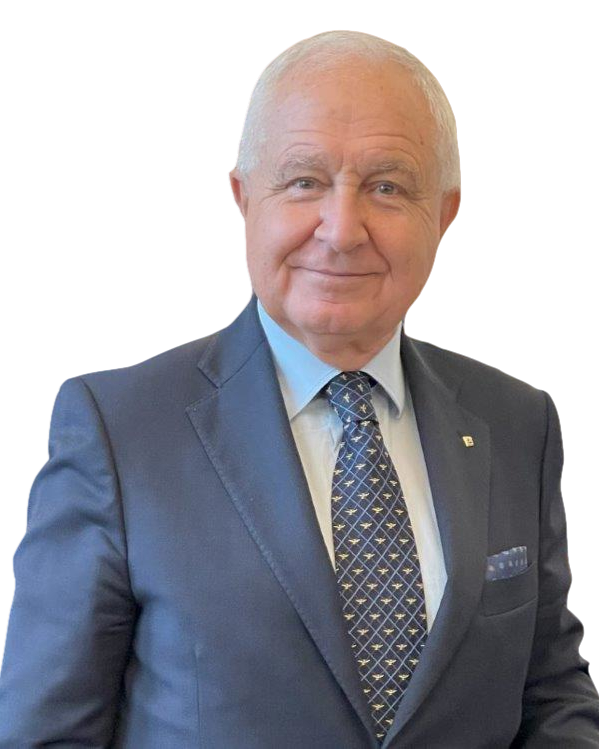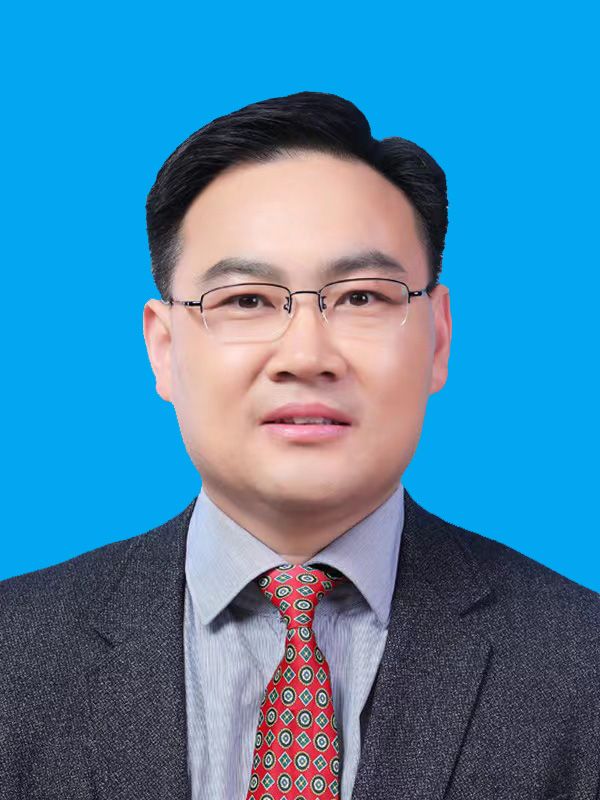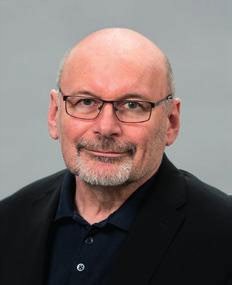
Speech Title: UAVs, Measurements and Precise Agriculture
Abstract: Unmanned Aerial Vehicles (UAVs) have become essential measurement platforms for precision agriculture, yet the reliability of vegetation indices and crop traits is often limited by radiometric instability and unquantified uncertainty. This talk presents a metrology-driven workflow that integrates physics-based radiometric compensation with uncertainty evaluation for NDVI and related indicators. We model illumination, atmospheric transmission, sensor spectral response, and SNR, and use Monte Carlo analysis to quantify their combined impact. A lightweight field procedure—combining irradiance sensing with panel-based calibration—yields robust, first-order compensation curves validated on orchard datasets (dry, clear conditions), aligning UAV-derived NDVI with handheld references.
Biography: PASQUALE DAPONTE was born on March 7, 1957. He obtained his bachelor's degree and master's degree "cum laude" in Electrical Engineering in 1981 from University of Naples, Italy. He is Full Professor of Electronic Measurements at University of Sannio - Benevento. He is Past Chair of the Italian Association on Electrical and Electronic Measurements, and Past President of IMEKO. He is member of: Working Group of the IEEE Instrumentation and Measurement Technical Committee N°10 Subcommittee of the Waveform Measurements and Analysis Committee, IMEKO Technical Committee TC-4 “Measurements of Electrical Quantities”, Editorial Board of Measurement Journal , Acta IMEKO and of Sensors. He is Associate Editor of IET Science Measurement & Technology Journal. He is member of the Board of Armed Forces Communications and Electronics Association (AFCEA) Naples Charter. He has organised some national or international meetings in the field of Electronic Measurements and European co-operation. He has published more than 370 scientific papers in journals and at national and international conferences on the following subjects: Measurements and Drones, ADC and DAC Modelling and Testing, Digital Signal Processing, Distributed Measurement Systems.
 Zhu.jpg)
Speech Title: In-Space Additive Manufacturing
Abstract: In-space Additive manufacturing (ISAM) in space offers a transformative solution to the limitations of launch vehicle size and mass, enabling on-demand production of tools, parts, and structures beyond Earth. By fabricating components directly in orbit or on planetary surfaces, ISAM expands the design possibilities for space infrastructure and reduces dependence on costly resupply missions. However, significant technical challenges remain. In microgravity, controlling liquids, powders, and molten materials is difficult, limiting the range of viable Additive manufacturing technologies. Currently, Fused Deposition Modelling (FDM) and Directed Energy Deposition (DED), where one extrudes solid polymer filaments and the other melts metal wire feed by laser, are the most practical approach demonstrated in space. Yet, factors like surface tension, lack of gravity, and vacuum conditions affect print precision and mechanical performance. This seminar explores the development background and current status in the field, and presents recent research progresses on gravity and vacuum effects on FDM and DED processes by Earth-based experimental investigation and multi-physics modeling conducted in Space Engineering Lab at York University.
Biography: Dr. Zheng Hong (George) Zhu is a Professor in the Department of Mechanical Engineering at York University in Canada. He holds the title of founding Co-Director of Centre for Manufacturing Technology Entrepreneurship and the Space Engineering Lab at the same University. He has served as the Director of Space Engineering undergraduate program in the Department of Earth and Space Science and Engineering, Chair of the Department of Mechanical Engineering, and Inaugural Academic Director of Research Commons in the Office of Vice-President Research & Innovation at York University. His research interests include dynamics and control of spacrcraft, space robotics, computational mechanics and control, machine learning, 3D printing in space, and CubeSat technology. He has authored 235 peer-reviewed journal papers and 185 conference articles. Dr. Zhu is the vice-President of International Society of Mechanical System Dynamics and the Honorary Treasurer and Board Member of Canadian Society of Mechanical Engineering. He holds the titles of Academician of International Academy of Astronautics, College Member of the Royal Society of Canada, Fellows of the Canadian Academy of Canada, Engineering Institute of Canada, Canadian Society for Mechanical Engineering, American Society of Mechanical Engineers, Associate Fellow of the American Institute of Aeronautics and Astronautics, and Senior Member of IEEE. He received the 2019 Ontario Professional Engineers Award - Engineering Medal R&D from Professional Engineers Ontario in Canada, the 2024 Solid Mechanical Medal and the 2021 Robert W. Angus Medal from Canadian Society for Mechanical Engineering, and the 2022 President's Research Excellence Award from York University. Currently, he is the Editor-in-Chief of Acta Astronautica – the flagship journal of International Academy of Astronautics.

Speech Title: Intelligent Perception and Control for Spacecraft Proximity Operations with Non-Cooperative Targets
Abstract: Spacecraft proximity operations with non-cooperative targets, as enabling technologies for some current and near-future missions such as removing space debris, repairing defunct satellites, etc., have garnered extensive attention. The success of these missions heavily relies on accurate target perception and safe proximity control. However, the non-cooperative nature of targets and the complexities of the space environment pose significant challenges for the target perception and control of spacecraft proximity operations. In this talk, I would like to share our recent research advances on the intelligent perception and control for spacecraft proximity operations with non-cooperative targets. The main research contents include: 1) intelligent target perception in the complex space environment, including representation and determination of semantic information, three-dimensional reconstruction, and pose measurement of space non-cooperative targets; 2) reinforcement-learning-based intelligent proximity control under complex motion and physical constraints; 3) simulation and experimental validation of the proposed method in typical scenes. The research results provide significant theoretical and technical support for the autonomous manipulation and control of space non-cooperative targets. Finally, I shall close by discussing on-going and future research avenues that can further address some practical engineering problem in spacecraft proximity operations.
Biography: Qinglei Hu obtained his B.Eng. degree in electrical and electronic engineering from Zhengzhou University, Zhengzhou, China, in 2001, and his Ph.D. degree with the specialization in guidance and control from Harbin Institute of Technology, Harbin, China, in 2006. From 2003 to 2014, he was with the Department of Control Science and Engineering, Harbin Institute of Technology, and then he joined Beihang University in 2014 as a Full Professor. His current research interests include intelligent perception and control, fault diagnosis and fault-tolerant control, and their applications in autonomous spacecraft systems. He has published five monographs in Elsevier, Springer, etc., and 80+ journal papers in IEEE transactions and AIAA journals. He has authorized 30+ national invention patents. He has won the second prize of national Technological Invention Award and the first prize of national defense technological invention Award. He has been appointed the Changjiang Distinguished Professorship, and has been selected as Thomson Reuters Highly Cited Researchers from 2016-2022. Currently, he serves as an Associate Editor for Aerospace Science and Technology.

Speech Title: Effects of Methane Impurities in Liquid Rocket Engine Cooling Channels
Abstract: Regenerative cooling is a critical technology for modern liquid rocket engines, particularly for high-thrust methane-fueled systems that operate under trans-critical and supercritical conditions. Even trace amounts of non-methane impurities in methane fuel can significantly alter its thermophysical properties, leading to large variations in heat transfer, pressure drop, and cooling efficiency. This study investigates the effects of typical impurities—such as nitrogen, ethane, propane, and carbon dioxide—on the behavior of methane-based propellants in rocket cooling channels. Using accurate equations of state and advanced thermodynamic modeling, we analyze how small impurity concentrations (up to 5%) modify critical parameters, phase behavior, and property gradients near the pseudo-critical region. The results reveal strong non-monotonic variations in density, heat capacity, and thermal conductivity, as well as the emergence of a broadened Widom region for certain mixtures. These effects can drastically change wall temperature distributions and heat transfer coefficients in regenerative cooling passages. The findings highlight the necessity of accounting for impurity-induced variations in thermophysical properties when designing next-generation methane rocket engines to ensure reliable thermal management and performance prediction.
Biography: Professor Oskar J. Haidn, from the Chair of Sustainable Future Mobility at the Technical University of Munich (TUM), specializes in liquid rocket engine research. He previously served as the Deputy Director of the Propulsion Research Institute at the German Aerospace Center (DLR) and is a tenured professor at TUM. With nearly four decades of experience in aerospace propulsion, Professor Haidn has extensive expertise in the design and optimization of key liquid rocket engine systems, including combustion chambers, turbopumps, injectors, and cooling mechanisms. He has published over 400 papers in top-tier international journals and academic conferences in the aerospace field and has authored more than ten monographs. He has been recognized as a Fellow of EUCASS and an Associate Fellow of AIAA. During his tenure at TUM, he led the TR-40 project—a German Research Foundation (DFG)-funded initiative on future space transportation systems—conducting in-depth research on methane rocket engine design, system and material longevity, engine heat transfer and cooling technologies, and combustion numerical simulations.

Biography: Dusit Niyato is currently the President's Chair professor in Computer Science and Engineering, Nanyang Technological University, Singapore. Dusit's research interests are in the areas of generative Al, Internet of Things (loT), edge intelligent metaverse, mobile and distributed computing, and wireless networks. Dusit won the Best Young Researcher Award of ComSoc Asia Pacific, The 2011 IEEE Comsoc Fred W, Ellersick Prize Paper Award, the IEEE Computer Society Middle Career Researcher Award for Excellence in Scalable Computing in 2021, and Distinguished Technical Achievement Recognition Award of IEEE ComSoc Technical Committee on Green Communications and Computing 2022, Currently, Dusit is serving as Editor-in-Chief of IEEE Transactions on Network Science and Engineering, an area editor of IEEE Transactions on Vehicular Technology, associate editor of IEEE Internet of Things Journal. IEEE Transactions on Mobile Computing, IEEE Wireless Communications, IEEE Network, and ACM Computing Surveys, He was named the 2017-2021 highly cited researcher in computer science. He is a Fellow of IEEE and a Fellow of IET.
© MEAE 2018-2025. All Rights Reserved | Contact Us meae_conf@163.com